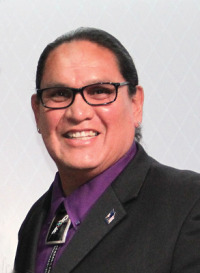
Suppose a federal employee began drinking at work on federal property and caused an accident on his way home. The victim of this accident could certainly bring a suit against the federal employee, but would that victim ever consider suing the United States government? The United States and the 50 states have laws and regulations protecting their sovereign status and ability to be sued. This is a right of the sovereign that goes back to the days of kings.
Indian nations, as sovereigns, possess the same sovereign immunity from suit that federal and state governments possess. Tribal sovereign immunity is a recognized doctrine of federal law based on the status of Indian tribes as sovereigns whose existence predates the United States.
Recently, within the past two years, the Supreme Court has limited tribal sovereignty and jurisdiction vis-à-vis non-Indians. This challenge may also represent an opportunity that can be addressed through the use of risk management, risk pools, tribal tort reform and federal legislation affirming the authority of Indian tribes to establish our own laws on tort reform.
Native peoples are the original inhabitants of the Americas, endowed by our creator with inalienable rights to life, liberty and the pursuit of our ways of life. From the beginning of time, our grandmothers and grandfathers founded our nations’ tribal governments to preserve our native rights, safeguard our rights to freedom and liberty, and exercise self-government to protect native lands, culture and future generations.
When Europeans first landed on American shores, they sought out Native Americans for advice, friendship, and to secure permission to live in America. The Dutch came to New Netherlands (now New York) in 1609 under orders to negotiate with tribes for land. The English colonies sought recognition of their colonial lands taken from neighboring Indian nations, but recognized Indian tribes as the original owners of the soil.
In his Statement on American Indian Policy (1983), President Ronald Reagan explained the historic nation-to-nation relations between the United States and Indian nations:
“When European colonial powers began to explore and colonize this land, they entered into treaties with sovereign Indian nations. Our new nation continued to make treaties and to deal with Indian tribes on a government-to-government basis. Throughout our history, despite periods of conflict and shifting national policies in Indian affairs, the government-to-government relationship between the United States and Indian tribes has endured.”
In the bigger picture, there are looming challenges to tribal sovereign immunity, especially in cases involving tort liability to third parties arising in the commercial context. Often the challenges to tribal sovereign immunity arise in cases where small-dollar claims are at issue—$25,000 in some cases.
In the Kiowa and Bay Mills decisions, the Supreme Court questioned whether tribal sovereign immunity should extend to third-party tort victims. The Supreme Court explained: “There are reasons to doubt the wisdom of perpetuating the doctrine (i.e., tribal sovereignty)… This is evident when tribes take part in the nation’s commerce. Tribal enterprises now include ski resorts, gambling, and sales of cigarettes to non-Indians… In this economic context, immunity can harm those who are unaware that they are dealing with a tribe.”
In Lewis v. Clark (2017), the Lewises were traveling on I-95 in Connecticut south towards New York City, and were struck in the rear by Clark, an employee of a tribal gaming authority. The Supreme Court held: “in a suit brought against a tribal employee in his individual capacity, the employee, not the tribe, is the real party in interest and the tribe’s sovereign immunity is not implicated. That an employee was acting within the scope of his employment at the time the tort was committed is not, on its own, sufficient to bar a suit against that employee on the basis of tribal sovereign immunity.”
While the Lewis case does not represent a significant diminishment of the doctrine of tribal sovereign immunity, another case might develop into more dangerous limitations. Accordingly, the question arises, should Indian tribes now act to forestall, to the extent possible, such “common law” activism by the Supreme Court vis-à-vis tribal sovereign immunity?
The challenge to tribal sovereign immunity may also be an opportunity. State and local governments have undertaken risk management programs and established risk pools to spread the cost of insuring against third-party tort claims over a period of years and even among small governments.
At least 33 states’ acts limit, or “cap,” the monetary amount for damages that may be recovered from judgments against the state, and at least 29 states (often in combination with a cap) prohibit a judgment against the state from including punitive or exemplary damages.
The Federal Tort Claims Act has been extended to cover Indian tribes and tribal employees in some circumstances under Public Law 93-638 contracts. Yet, in the commercial context, there is little statutory limit on the exposure of tribal sovereign immunity.
As Indian nations, we have always been forward-looking, whether it was land, environmental, or resource protection. Indian Country is not about to let the Supreme Court drag us back to the days when the federal government told us what was best for our communities. Now is the time to be proactive and search for a common ground to protect tribal sovereignty.
Operating risk pools provides an avenue for tribes to pool their economic interests to better manage insurance costs, identify risks early and cooperate on risk management. If tribes can evaluate the intertribal risk pool approach as a model, federal legislation might be sought to limit tribal government exposure by affirming an elective tribal law system of limited waivers of sovereign immunity.
NIGA is committed to taking this sovereignty discussion to the next level of action, and made it a prime topic of interest at our annual trade show. Tribal leaders are eager to start the discussion of how to protect tribal sovereignty in the 21st century.


















